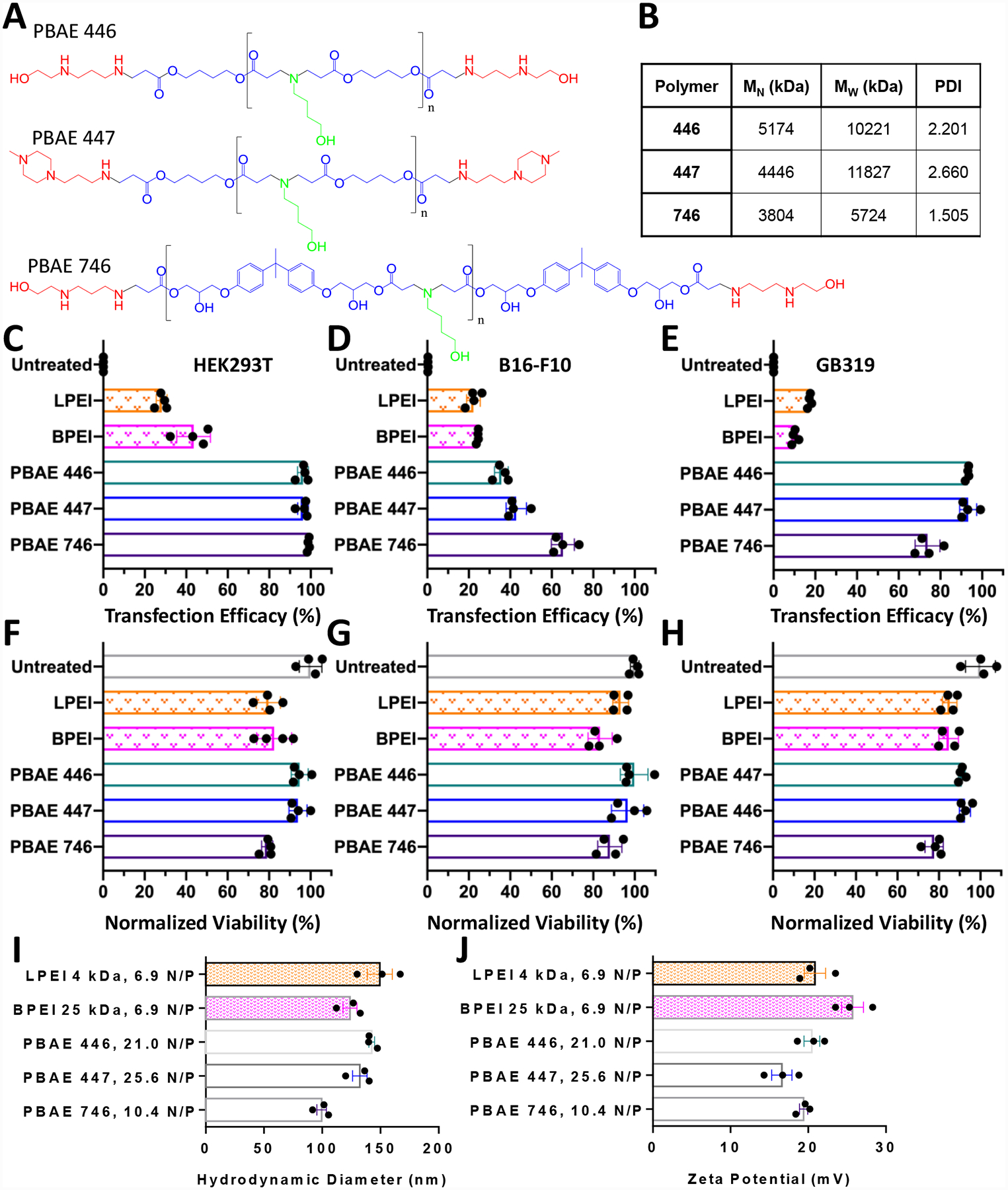Figure 1.

PEI and PBAEs enable transfection in mammalian cells. A) Structures of selected PBAE molecules. B) GPC data of synthesized PBAEs C) Selected PBAEs achieve up to 99% transfection efficacy in HEK293T cells, D) 65% transfection efficacy in B16-F10 cells and E) 90% transfection efficacy in GB319. F-H) Cellular viability following transfection is maintained. Transfections were performed in 10% serum conditions with a total DNA dose per well of either 450 ng (HEK293T) or 600 ng (B16-F10 or GB319 cells). I) Nanoparticle properties of hydrodynamic diameter and J) zeta potential of all materials tested. N/P ratios correspond to the following w/w values: LPEI, 2 w/w; BPEI, 2 w/w; PBAE 446, 60 w/w; PBAE 447, 60 w/w; PBAE 746, 40 w/w. Error bars show mean ± SEM of the four well replicate points shown or the mean ± SEM of three individual preparations of nanoparticles for characterization.
